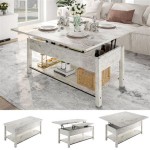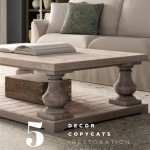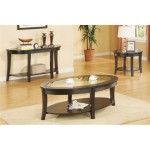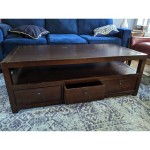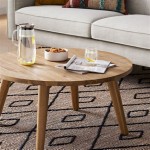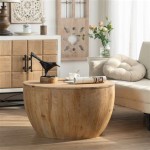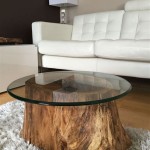How To Chalk Paint a Coffee Table
Chalk paint offers a simple and effective way to revitalize furniture, giving it a unique, matte finish. This article details the process of chalk painting a coffee table, transforming it into a stylish centerpiece.
1. Preparing the Coffee Table
Preparation is crucial for a successful chalk paint application. Begin by cleaning the coffee table thoroughly. A mixture of mild soap and water will effectively remove dirt and grime. For stubborn grease or sticky residue, a degreaser may be necessary. Allow the table to dry completely before proceeding.
Lightly sanding the surface with fine-grit sandpaper (220-grit or higher) creates a slightly textured surface, promoting better paint adhesion. This step is particularly important for surfaces with a glossy finish. After sanding, remove any dust with a tack cloth or a damp cloth.
For coffee tables with existing peeling paint or varnish, a more thorough sanding or even stripping may be required. Use a paint scraper to remove loose paint, and sand down any remaining uneven areas. Fill any deep scratches or dents with wood filler, allowing it to dry completely and sanding it smooth before painting.
2. Gathering Necessary Supplies
Having all the necessary supplies readily available streamlines the painting process. In addition to the chosen chalk paint color, gather paintbrushes, painter's tape, a drop cloth, and stirring sticks. Different brush types yield different effects. A natural bristle brush creates a more textured finish, while a synthetic brush provides a smoother application.
Consider using a wax or sealant to protect the painted surface. Wax provides a durable finish and enhances the depth of color. Sealant offers a more robust protection against spills and wear. Choose a wax or sealant compatible with chalk paint.
3. Applying the Chalk Paint
Apply the chalk paint in thin, even coats, working in the direction of the wood grain. Avoid overloading the brush, as this can lead to drips and uneven coverage. Allow each coat to dry completely before applying the next. Typically, two to three coats are sufficient for optimal coverage and a rich color payoff.
For intricate details or areas requiring precision, a smaller brush is recommended. Painter's tape can be used to mask off sections that should not be painted, such as hardware or glass inserts.
4. Distressing (Optional)
Distressing is an optional technique that enhances the vintage or rustic aesthetic of chalk-painted furniture. After the paint has dried, use fine-grit sandpaper to lightly sand along edges, corners, or raised details to reveal the underlying wood. This creates a worn, timeworn appearance.
The level of distressing can be customized to achieve the desired look. For a subtle effect, minimal sanding is sufficient. For a more pronounced distressed look, sand more aggressively.
5. Applying Wax or Sealant
Applying wax or sealant is a critical step in protecting the painted surface and enhancing its durability. If using wax, apply a thin, even layer with a clean cloth or wax brush, working in small sections. Allow the wax to dry according to the manufacturer's instructions, typically for several hours or overnight.
If using a sealant, apply it in thin, even coats, following the product instructions. Multiple coats may be necessary for optimal protection. Allow each coat to dry completely before applying the next. Some sealants require light sanding between coats for a smooth finish.
6. Curing and Care
Allow the wax or sealant to cure completely before using the coffee table. The curing time varies depending on the product used and environmental conditions. Refer to the manufacturer's instructions for specific curing times.
To maintain the painted surface, clean it regularly with a damp cloth. Avoid using harsh chemicals or abrasive cleaners, as these can damage the finish. Reapply wax or sealant periodically, as needed, to maintain the protective layer and enhance the longevity of the finish.
7. Troubleshooting
Occasionally, issues might arise during the chalk painting process. If the paint appears too thick, it can be thinned with a small amount of water. If brushstrokes are visible, lightly sand the dried paint and apply another thin coat. Uneven coverage can be addressed by applying additional coats of paint to the affected areas.
If the painted surface chips or scratches after curing, touch up the affected areas with paint and reapply wax or sealant. Consistent care and maintenance will ensure the longevity and beauty of the chalk-painted coffee table.

Elegant Coffee Table Makeover Diy With Chalk Paint

Gray Chalk Paint Coffee And Side Table Maison De Pax

Chalkboard Top Coffee Table Makeover Liz Marie Blog

Old Thrift Coffee Table Transformed With Chalk Paint Polyshades Artsy Rule

Farmhouse Coffee Table Makeover Our Southern Home

Gray Chalk Paint Coffee And Side Table Maison De Pax

Coffee Table Makeover With Chalk Paint

Coffee Table Makeover Man Cave Furniture With Rust Paint Do Dodson Designs

Chalkboard Paint On Coffee Table Rust Oleum

Chalkboard Top Coffee Table Makeover Liz Marie Blog
